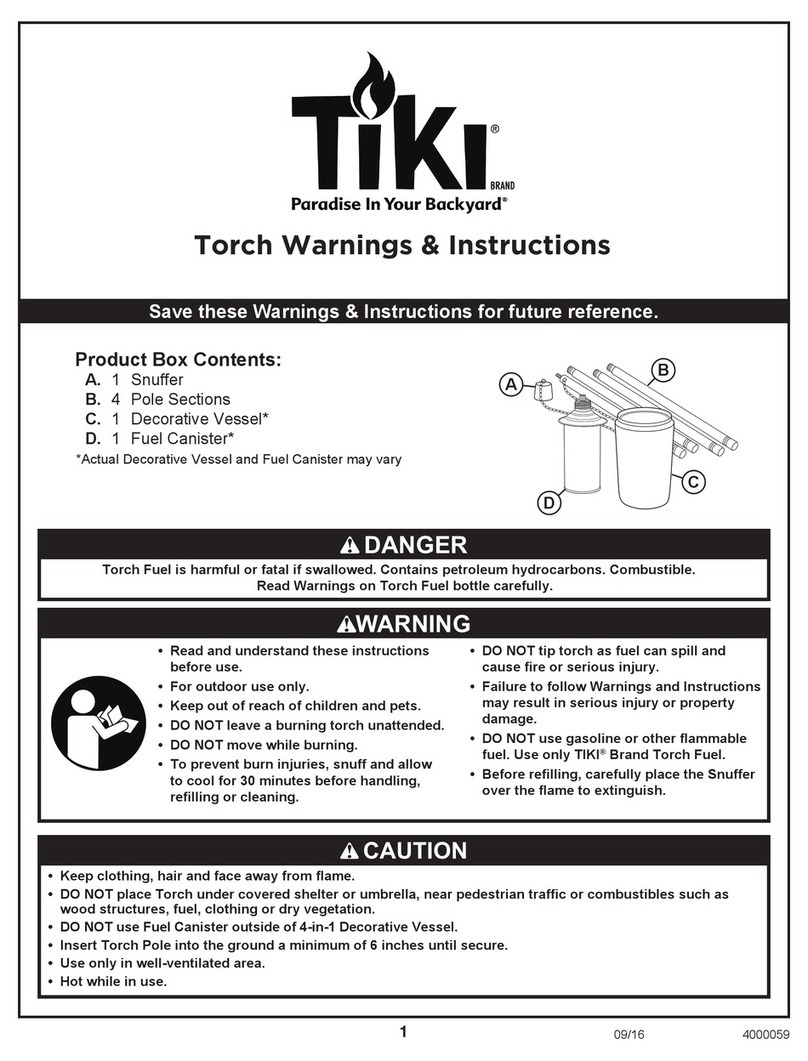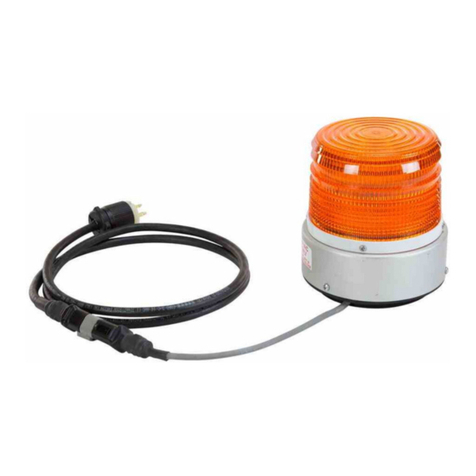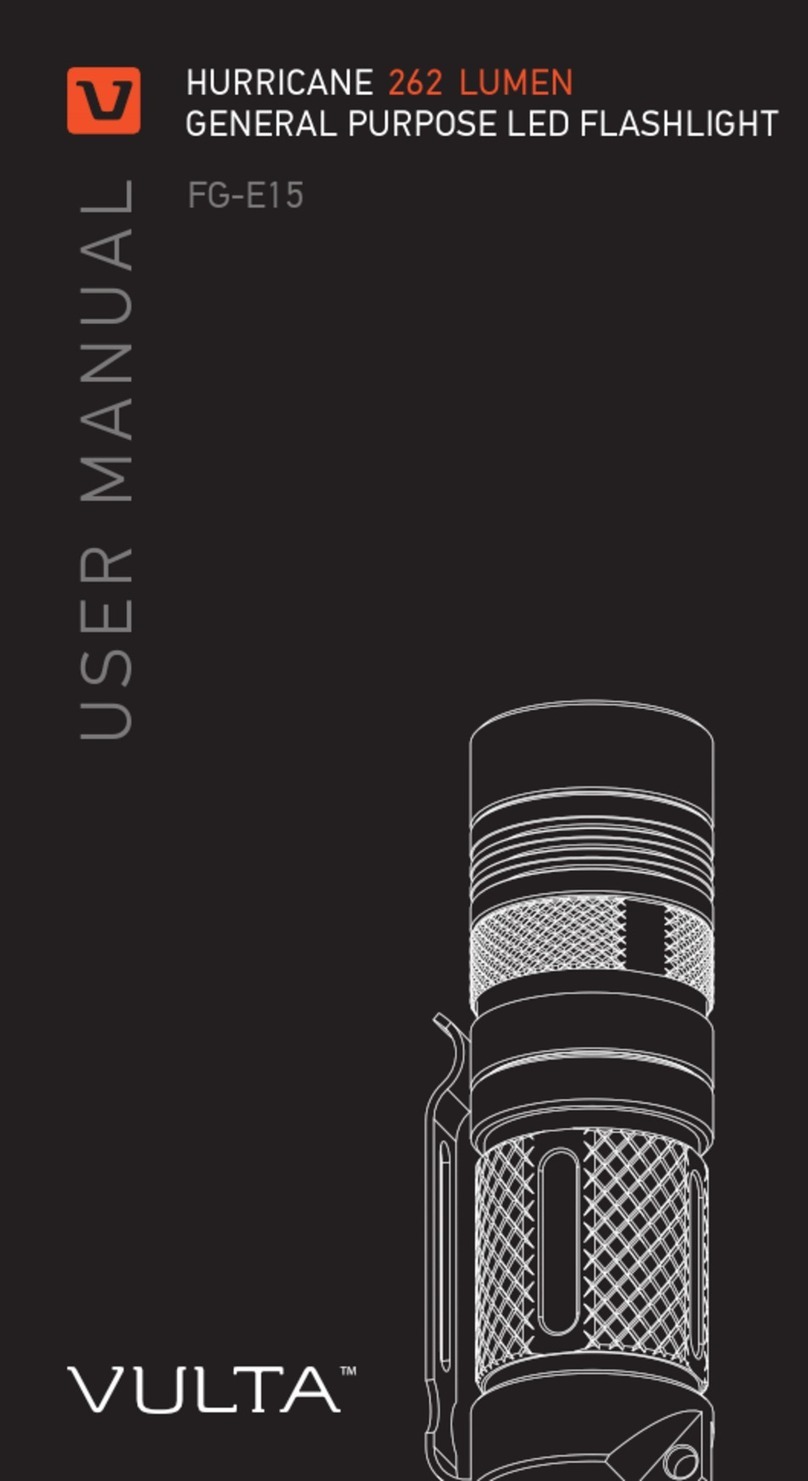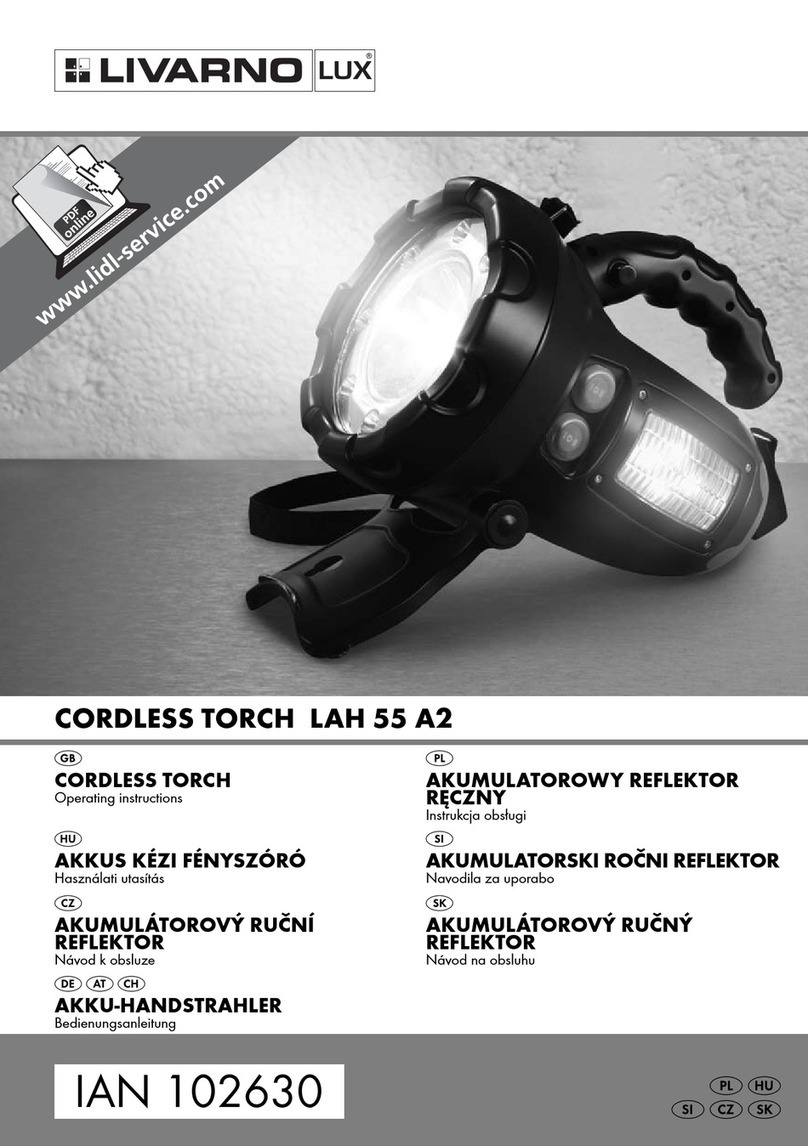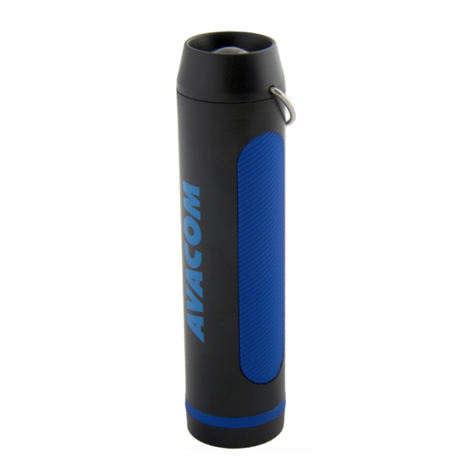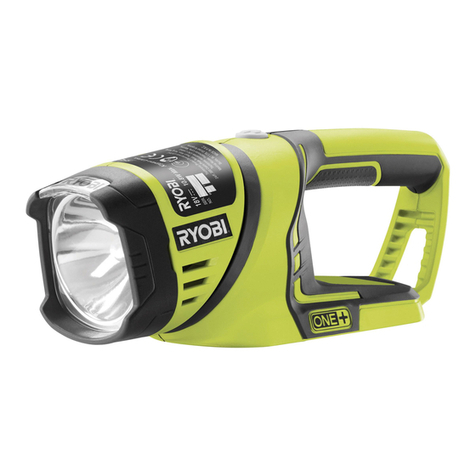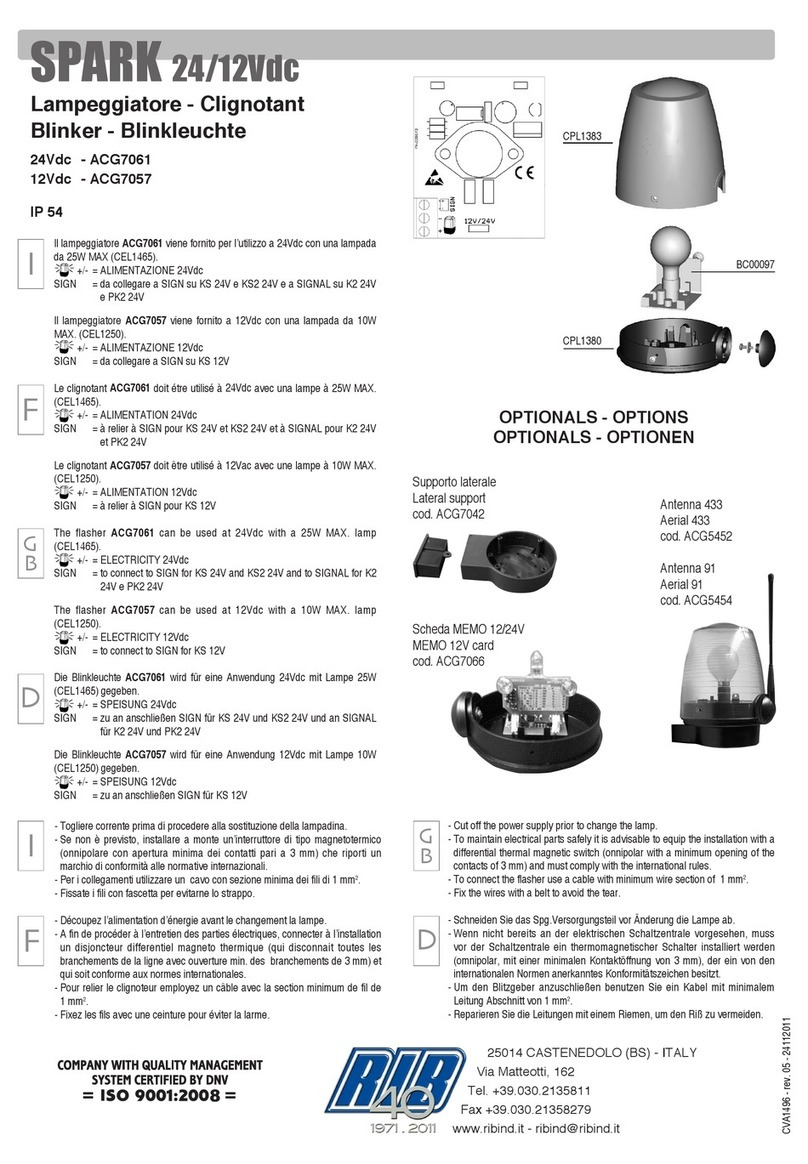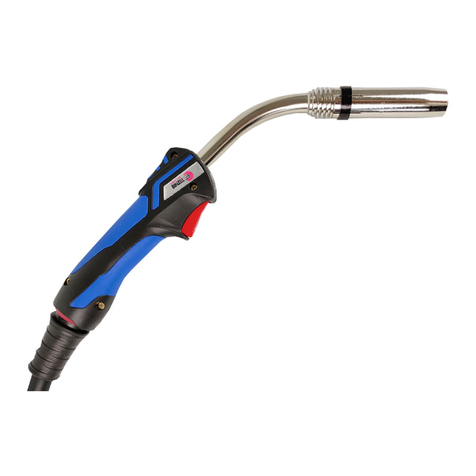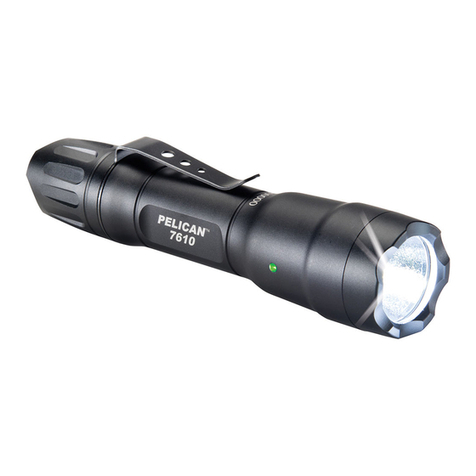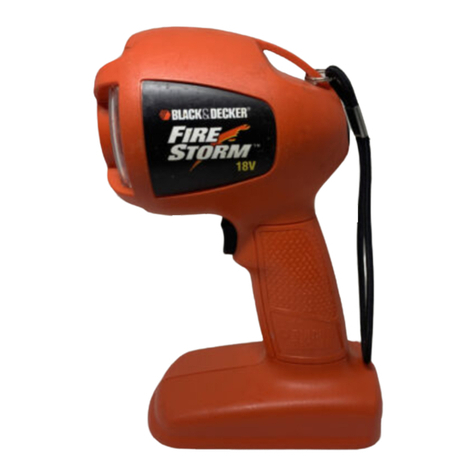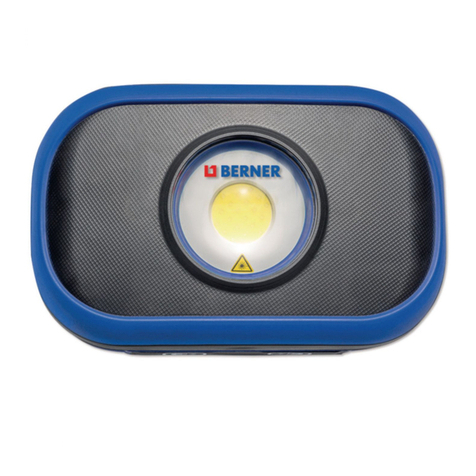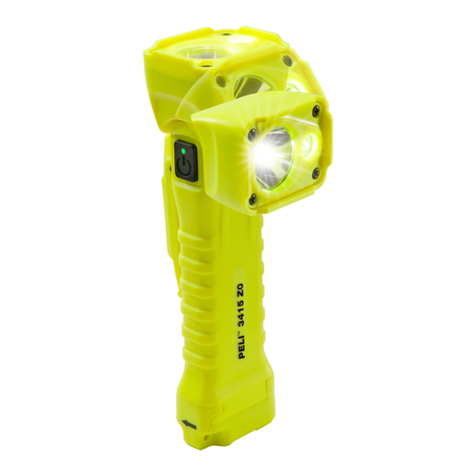−S2−
2.Precautions for Safety
2.1 Read, understand, and comply with all safety rules described at the beginning of the
welding power source manual in addition to the following before initiating arc welding
operations.
WARNING ●Observe the following to prevent a serious accident that results in
a serious injury or a death
1) This welding torch is designed and manufactured in due consideration of safety, but you should
observe the handling precautions described in this Instruction Manual. If you fail to do so, there may
occur an accident resulting in a serious injury or a death.
2) Related laws and regulations and your company's standards should be observed in constructing input
power source, selecting an installation area, handling/storing/piping high pressure gas, storing welded
products, and disposing wastes.
3) Keep out of the moving zone of a welding machine and the welding area.
4) A person with a pacemaker should not go near the operating welding machine and the welding area
unless his or her doctor permits. A welding machine generates a magnetic field around it during
powered, and that will have a bad effect on the pacemaker.
5) Installation, maintenance and repair of this welding torch should be done by qualified personnel or
those who fully understand a welding torch for further safety.
6) Operation of this welding torch should be done by personnel who have knowledge and technical skill
to be able to understand the contents of this manual well and to handle the torch safely.
7) This welding torch must not be used for purposes other than welding.
2.2 Observe the following to prevent an electric shock.
WARNING ●Do not touch live electrical parts .
●Touching live electrical parts can cause fatal shock or severe
burns.
1) Only qualified personnel should do the grounding work of the welding power source and a workpiece,
or a workpiece and powered peripheral jigs while abiding by domestic regulations.
2) Do not touch live electrical parts.
3) Always wear dry insulating gloves and other body protection. Do not wear torn or wet gloves and
work clothes.
4) Before doing the installation, inspection, maintenance, etc. of this product, be sure to turn off all the
input power sources and check, several minutes later, that there is no charging voltage since the
condenser and the like may have been recharged.
5) Do not use cables with insufficient capacity, with damage, or with naked conductors.
6) Be sure to tighten the connections of cables and insulate them in order to prevent personnel from
touching those parts easily.
7) DO NOT use a welding machine with its case or cover removed.
8) Secure a firm foothold before initiating work. DO NOT perform work with an unstable foothold or
with a foothold at a height of two meters or above.
9) Make periodic inspection and maintenance. Damaged parts should be repaired before use.
10) Turn off POWER switch when not in use.
IMPORTANT SAFEGUARD
